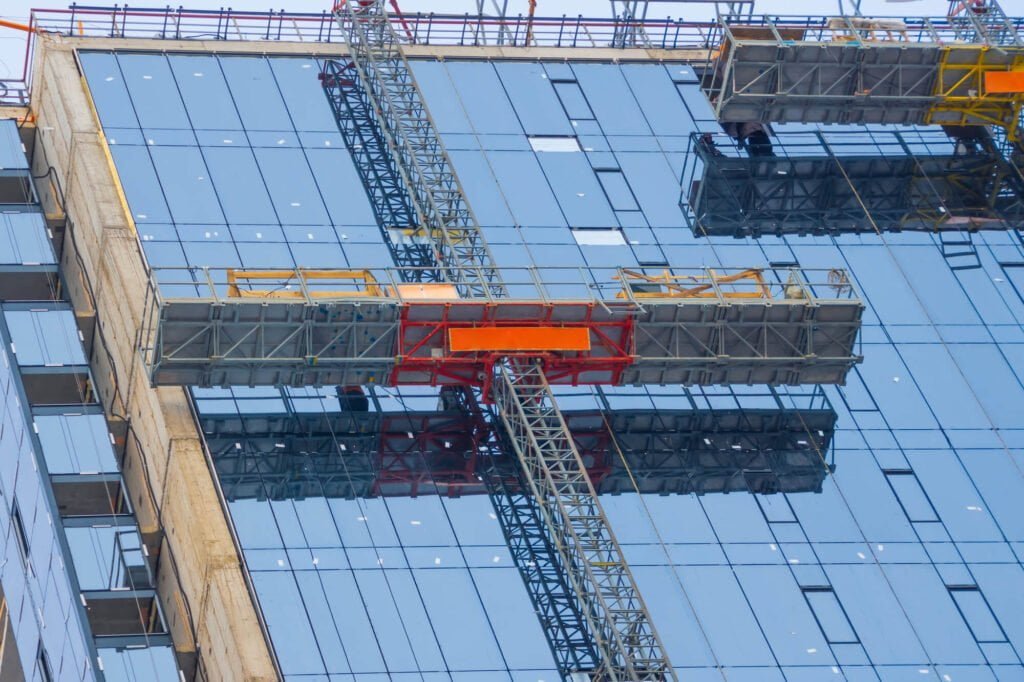A mast climber is a powered access solution that consists of an elevating work platform that is fixed either to single or twin vertical masts. Mast climbers are a platform that is connected to one or more masts. The mast climbing work platforms come either in a fixed or mobile configuration and they can either be attached to a structure or freestanding.

What does a mast climber do?
Mast climbers are a faster, more convenient, and more cost-friendly automated power unit that is used in an expansive range of construction and maintenance work. It is often confused with construction elevators but the difference lies in the fact that mast climbers involve in working in an open space, unlike construction elevators which are enclosed.
For twin masts, the platform length ranges from 6.7-35.9 meters and 2.8-13.4 meters for a single mast. The flexibility of the masts allows for efficient work platforms that can match the height of the structure to be put up. When freestanding, mast climbers can go high as up to 9 meters high and can reach heights of up to 150 meters when tied to a building. For twin masts, the maximum loading capacity reaches up to 4550kg.
As one of the most recent developments in access technology, mast climbers are designed to prioritize the safety of the workers and all those in the vicinity and it has been proven that they reduce the risk of getting injured on-site significantly.
Since their introduction, mast climbers have made a huge impact in the construction industry. Some of these benefits include:
- Mast climbers are able to hoist a large amount of building materials up high distances
- Mast climbers increase productivity and have led to a decrease in contract times by 40%.
- Masts have significantly reduced labour and plant cost.
- The platforms are automatically resized, significantly reducing work time
- They help reduce building ties by up to 80%
- Mast climbers are cost-effective.
Mast climbers vs scaffolding
The main difference between mast climbers and scaffolds lies in the fact that the climbers allow the workers to move up and down the structures without having the struggle since the entire platform moves while scaffolds are fixed to one height..
Mast climbers have fewer parts as compared to scaffolding therefore, the installation downtime is significantly reduced.
Mast climbers offer a safer way to get building materials to the exact position where they are needed making them a more preferred option. The payload for each mast range between 3000 to 10000 tons per mast.
Climbers can adjust different heights depending on the construction, therefore making them ideal for working, especially when the work is being done from lower heights while scaffolding is more about working from a fixed location.

Why is mast climbing better than scaffolding
A mast climber does not require sheeting unlike conventional scaffolding, which uses sheeting, said to be one of the most common fuels in the construction industry
In scaffolding, wooden boards are used, unlike in mast climbers whereby the structure is almost entirely made of metal.
Unlike mast climbers, a layer of potentially flammable equipment is used to cover the entire building. Therefore, the taller the building, the more the equipment that is put to use. This, therefore, makes mast climbers a much better option to use.
Be it single or twin masts, your scaffolder should know the best option for your project. With this information, you also get to learn more about mast climbers and make an informed decision if need be. And with the differences between mast climbers and scaffolding outlined, you get to determine which one suits your project best.